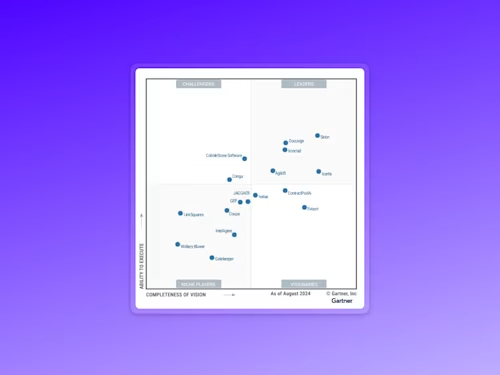
How to Choose a Contract Management Solution
Not all Contract Management Systems are created equal. Learn what to look for when choosing a CLM solution: searchability, integrations, flexible workflows.

Contract management software is crucial to the productivity of an organization. Good contract management could improve profitability by 9% of annual revenue, according to recent research by the independent International Association for Contract & Commercial Management (IACCM).
Contract lifecycle management (CLM) systems can streamline and automate a contract’s creation, negotiation, execution, and storage. And they’re a smart choice to replace the tedious, manual tools once used for these tasks, which lacked visibility into potential bottlenecks and unnecessarily repetitive steps.
It’s important to understand CLM capabilities so that you can select a solution that’s a good fit for your organization. New CLM technology now exists, with solutions that are easier and more cost-effective to integrate across an entire organization. To ensure your company avoids pitfalls and secures the benefits of a modern CLM solution, choose capabilities that fit the needs and size of your organization.
Here’s what to look for in a CLM solution:
A flexible and configurable workflow
By standardizing contract creation and reviews into configurable and flexible workflows, an organization can reduce errors and time spent on manual processes. For example, some solutions offer drag-and-drop tools that help non-technical users design and automate even the most complex agreement processes across multiple contributors, reviewers, and approvers.
An organization can also reduce confusion and human errors by choosing a contract management system that offers the ability to leverage pre-approved contract templates. Administrators should be able to easily create and configure such templates for common documents like NDAs or SOWs.
A truly comprehensive and flexible contract workflow should include some type of legal clause library filled with pre-approved legal language. During a negotiation, CLM users such as sales reps can search and insert fallback clauses for common points of negotiation—for example, a less favorable but still acceptable indemnification clause. Instead of leaning on the Legal team in routine situations, reps or their managers can use the clause library to save everyone time while maintaining compliance.
A searchable, central contract repository
Contract management systems aim to create a central repository that makes it easy to search for a specific contract. Look for CLM solutions that go beyond simple store-and-search to include organizing and searching by metadata, like tags, date signed and generated, contract type and other key attributes. This indexing capability can make finding a contract faster and more precise.
Easy integration into existing systems
The ability to integrate with the rest of an organization’s existing applications and departments can determine the true value of a contract lifecycle management system. The contract process is often just one stage of a larger business process. A typical sales process, for example, involves customer relationship management (CRM), Configure Price Quote templates (CPQ), and electronic signature tools. With integrated contract software, a sales rep can merge customer information from a CRM system while pulling product and pricing information from a CPQ system to create a contract accurately and quickly.
An integrated contract management system can also create enterprise-wide connectivity and collaboration. For example, when a CLM solution is integrated with an organization’s CRM system, legal teams can review contracts via the CLM system, as opposed to needing their own licenses to the CRM system just to review contracts. A similar benefit is felt by sales teams who once had to email signed contracts to other departments for further review and processing. When CLM and CRM solutions are integrated, signatures, contract data, and approvals are automatically routed to other systems and people that need to take action.
The right applications to meet your organization’s specific needs
An organization must first examine internal workflows before choosing the right contract management system. Look for options that will fit into the existing systems at your company and best alleviate ongoing pain points. If your workers aren’t particularly tech-savvy, choose contract software that’s less technical and more intuitive. Or if your organization struggles with security as it scales or is subject to federal regulations like Canada’s PIPEDA, HIPAA, or SOC 2, pick a contract management system that automates these processes to help with compliance.
You’ll want a CLM that meets these needs with easy integrations, a simple interface and proven security and compliance. If meeting security standards is important to your business, choose the CLM vendor that is FedRAMP certified, meaning the platform complies with strong security mechanisms and operational processes that meet or exceed the highest international security standards and protect your documents and data.
Get the report on top CLMs that covers usability, strategy, and customer satisfaction.
Choose a CLM that is easy to implement, use, and extend across the entire enterprise; and look for simple integrations that allow users to tap into other systems in your organization. See which CLM solutions are positioned as a Leader in the 2020 Gartner Magic Quadrant for Contract Lifecycle Management.
Call us to learn more about CLM systems for your organization.
Contributed by: Austin Miller, Director of CLM Product Marketing, Docusign

Related posts
Docusign IAM is the agreement platform your business needs



